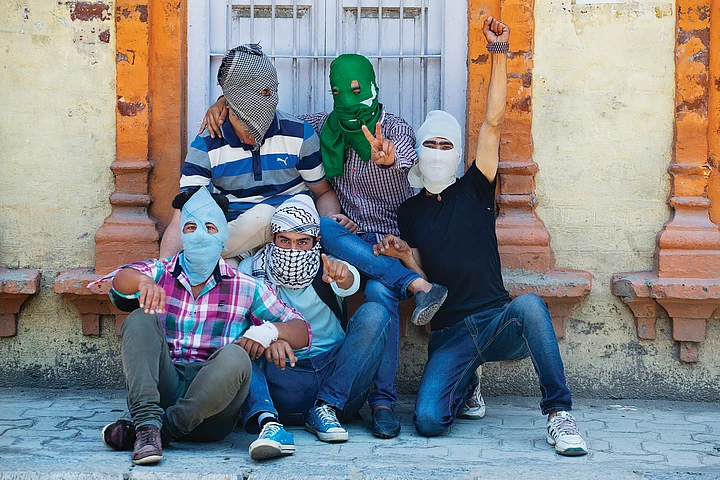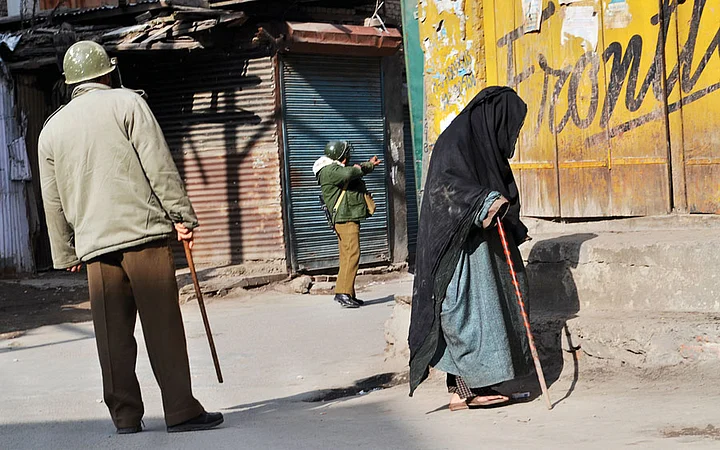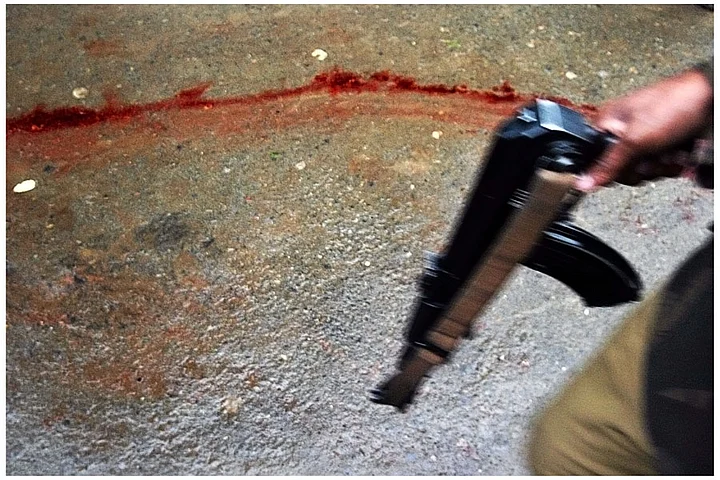Witness: Kashmir 1986-2016 chronicles Kashmir over a period of three decades, through the works of nine photographers. Edited by filmmaker Sanjay Kak, the photo book is described by him as an attempt to preserve art, especially in regions of conflict.
Kak says the final shove that led to the decision of compiling the photo book came following the 2014 floods in Kashmir, which left drenched numerous hard disks and cartons of photograph negatives in their wake.
Suddenly the delicate nature of what this huge collective memory of Kashmir was about – it dawned upon me... It was a spur – if we don’t do it now, God knows what will happen to these images. It’s extremely important to preserve them, lock them down in some safe sort of way, and a book is a permanent thing.Sanjay Kak
Kashmir and the Narrative of 'Anti-Nationalism'
It is not uncommon in contemporary times for Kashmir and ‘anti-nationalism’ to be used in the same breath.
When asked to comment on this, Kak told The Quint:
This is a book about Kashmir and life there and quite frankly, I don’t see how something that seeks to understand something can be considered anti-national. That’s a phraseology I don’t even understand, I’m not being able to respond it because I don’t even know what that means.
"I Just Dropped the Camera and Started Throwing Stones"
Shoukat Nanda is one of the nine photographers who have contributed to Witness. Speaking of his experiences as a photographer in the Valley, he says that there are some images that will forever stay with him.
He says of a boy who had been shot:
I took him in my lap and those few moments were one of the worst experiences I’ve ever had in my life... He died in my arms... Then a small kid appeared, as if out of nowhere, and he started throwing stones at the paramilitary forces. The boy who had been just killed was the schoolmate of this boy who was throwing stones. I took the picture of that boy – the picture of a small kid throwing stones at the mighty state.
A year after this incident, Nanda found himself in the middle of another violent conflict in 2010.
I found myself at the same place where that boy had died in my arms. My eyes were closed because of the smoke. People were shouting and running. At that time, I don’t know what happened, I just dropped the camera and started throwing stones. I felt that being neutral is just a figment of imagination for all of us. If in such a situation you are neutral, you are actually trying to side with someone who is not innocent. I threw stones, but I didn’t want to harm a soldier. I just wanted to give an expression to my rage.
Nanda adds that an emotion that has stayed with him is guilt. He elaborates and says that people in Kashmir often think that journalists can change their lives, to which he can only say that “this story can or cannot change things.” However, he stubbornly clings on to hope.
If I give up hope I’m no longer a photographer, hope is what keeps me working.
“Recovering Memories Too Dreadful to Be Kept Alive”
Kak says in the forward of the book that after a point “words seemed an inadequate tool for talking about memories” and therefore, “the work of photojournalists seemed to suggest a way of recovering memories that were almost too dreadful to keep alive.”
- 01/03Stone-throwers in Srinagar, 2015. (Photo Courtesy: Witness: Kashmir 1986-2016/Dar Yasin)

- 02/03Cops and an old lady in Srinagar, 2016. (Photo Courtesy: Witness: Kashmir 1986-2016/Azaan Shah)

- 03/03After a blast in Srinagar, 2006. (Photo Courtesy: Witness: Kashmir 1986-2016/Javeed Shah)

When asked to further elaborate on this idea, he says:
When you take a book and slow everything down... people are forced to understand the meaning of the image... It is a kind of attempt to look for meaning in genre which is otherwise seen as transient.
Kak says the pictures allow you a momentary pause and a glimpse into the lives and experiences of the photographers. Be it a Syed Shahriyar, trapped in a street, scaling walls and looking for shelter in a stranger’s house, or an Altaf Qadri being used as a human shield.
Every photographer who contributed to the book has at least at one point faced a life-threatening situation while taking photographs in Kashmir, and that indeed, “reminds them how important it is for them to do what they are doing”, concludes Kak.
Cameraman: Sanjoy Deb, Syed Shahriyar
Video Editor: Puneet Bhatia
Join The Quint on WhatsApp. Type “JOIN” and send to 9910181818.


